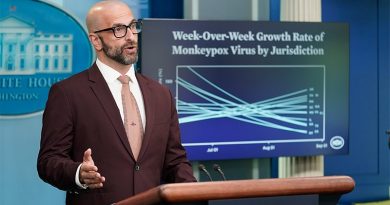US announces plan to import drugs from northern neighbor, Canada objects

Donald Trump’s administration unveiled a plan Wednesday to allow imports of lower-priced prescription drugs from Canada and other countries, but it was opposed by Ottawa, which said the scheme threatened its own medicine stocks.
Americans spend an average of $1,200 on prescription drugs per year—more than in any other country in the world—and the US president has made driving down costs a top priority for next year’s election.
“The president has recognized the opportunity to lower costs for American patients through safe importation,” Health Secretary Alex Azar said in a statement.
But a spokesman for Canada’s health minister Patty Hajdu told AFP: “Our government will protect our supply of and access to medication that Canadians rely on.”
He added: “Our message remains firm: We share the goal of ensuring people can get and afford the medication they need—but these measures will not have any significant impact on prices or access for Americans. We remain firmly focused on ensuring Canadians can access the medication they need.”
Canada’s opposition could present a major challenge to Trump’s plan, especially if Ottawa passes a law banning the practice, known in economics as “parallel trading.”
The US is alone among advanced countries in allowing manufacturers to set their own prices, rather than having to negotiate with national health insurance systems, one of several factors that have led to spiraling costs.
The price of insulin, a life-saving medicine used to treat diabetes, has more than tripled over the past decade, forcing many uninsured patients to ration their doses, smuggle it in from Canada or Mexico, or even choose between treatment and other basic expenses such as rent.
The issue has come to the fore in 2020 presidential election campaign, with all the leading Democratic contenders vowing to repeal the law preventing the government from negotiating with the drug manufacturers.
Senator Bernie Sanders has also led bus trips across the border from his home state Vermont to buy lower cost insulin in order to highlight the problem.
No firm timeline
Azar proposed rules Wednesday indicating two pathways to formalize the president’s plan, which was first outlined in July.
Under the first, US states would be allowed to propose importation programs for drugs already authorized in Canada, subject to approval by the US Food and Drug Administration.
However, the program would not include biological drugs—ones made from large or live molecules—meaning medications such as insulin would be excluded.
A second pathway would allow US pharmaceutical companies to import drugs originally manufactured and intended to be marketed abroad, including biological drugs.
The measure, Azar said, would allow drug companies to “bring that same product in the United States to basically compete against your own product, but at a lower list price.”
Both pathways are subject to comment periods before they are finalized, but there is no firm timeline for implementation.
Canada objects
Canada has previously expressed reservations.
Last month, its acting ambassador to the United States Kristin Hillman cited a recent study that estimated if 40 percent of US prescriptions were filled from Canada, the Canadian drug supply would run out in 118 days.
The plan could also face legal challenges from the pharmaceutical industry, which denounced it as “dangerous” when it was first previewed, arguing patients could be exposed to substandard or counterfeit drugs.
Stephen Ubl, CEO of Pharmaceutical Research and Manufacturers of America, urged the government to instead focus on policies that lower patients’ out-of-pocket medicine costs, the portion that insurance companies do not cover.
The industry argues that pushing down prices would undermine innovation, but critics say rising expenses are not only linked to research and development.
A 2016 Harvard Medical School study blamed factors such as the US patent system, which grants makers “government-protected monopolies” through market exclusivity that lasts years before generics can enter the market, and can be extended through “trivial” changes to patented molecules.
Drug makers have also been able to sidestep competition by offering settlements that pay generic companies to delay their lower-cost alternatives, known as “pay for delay” deals.
Source: Read Full Article



